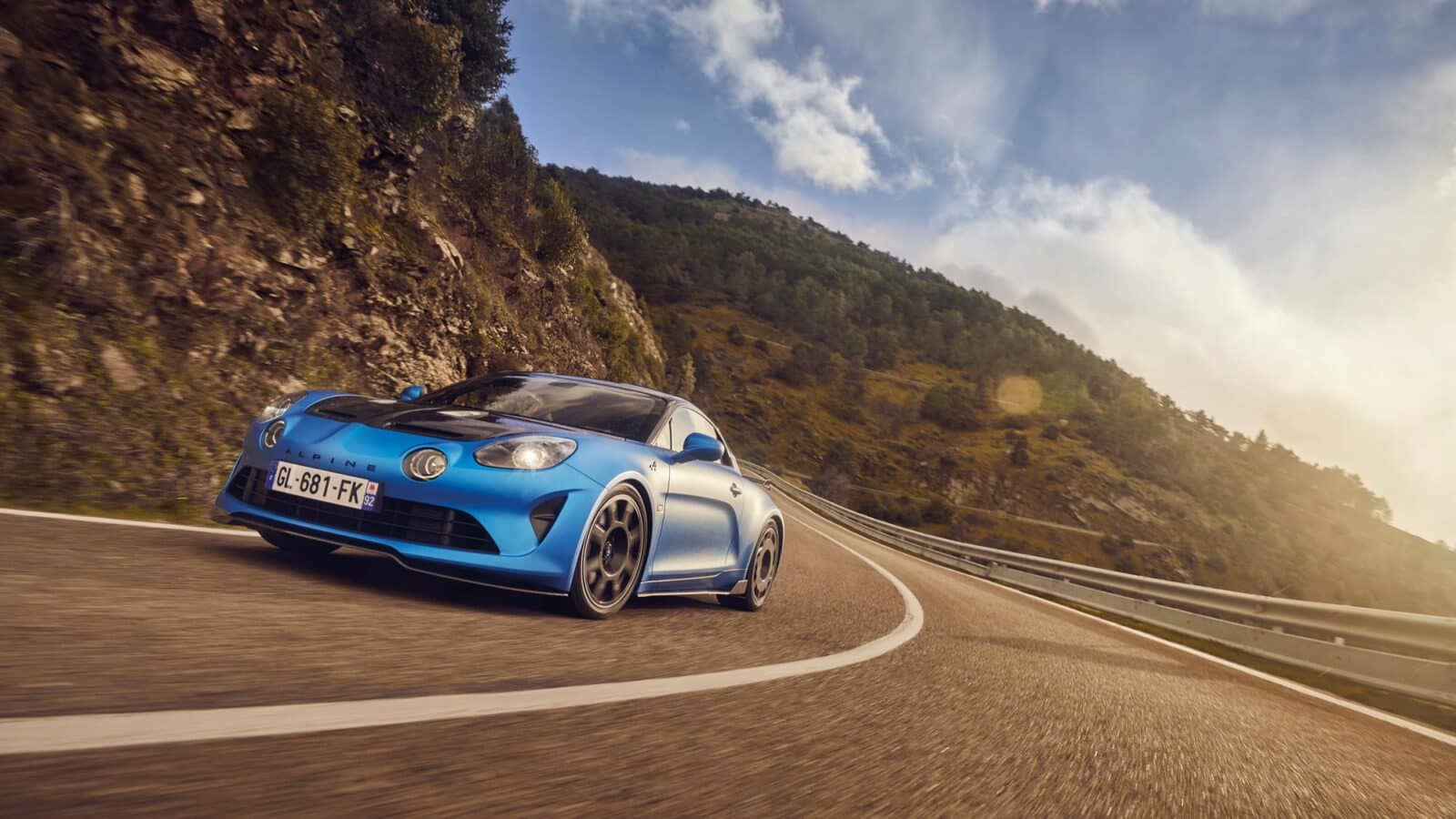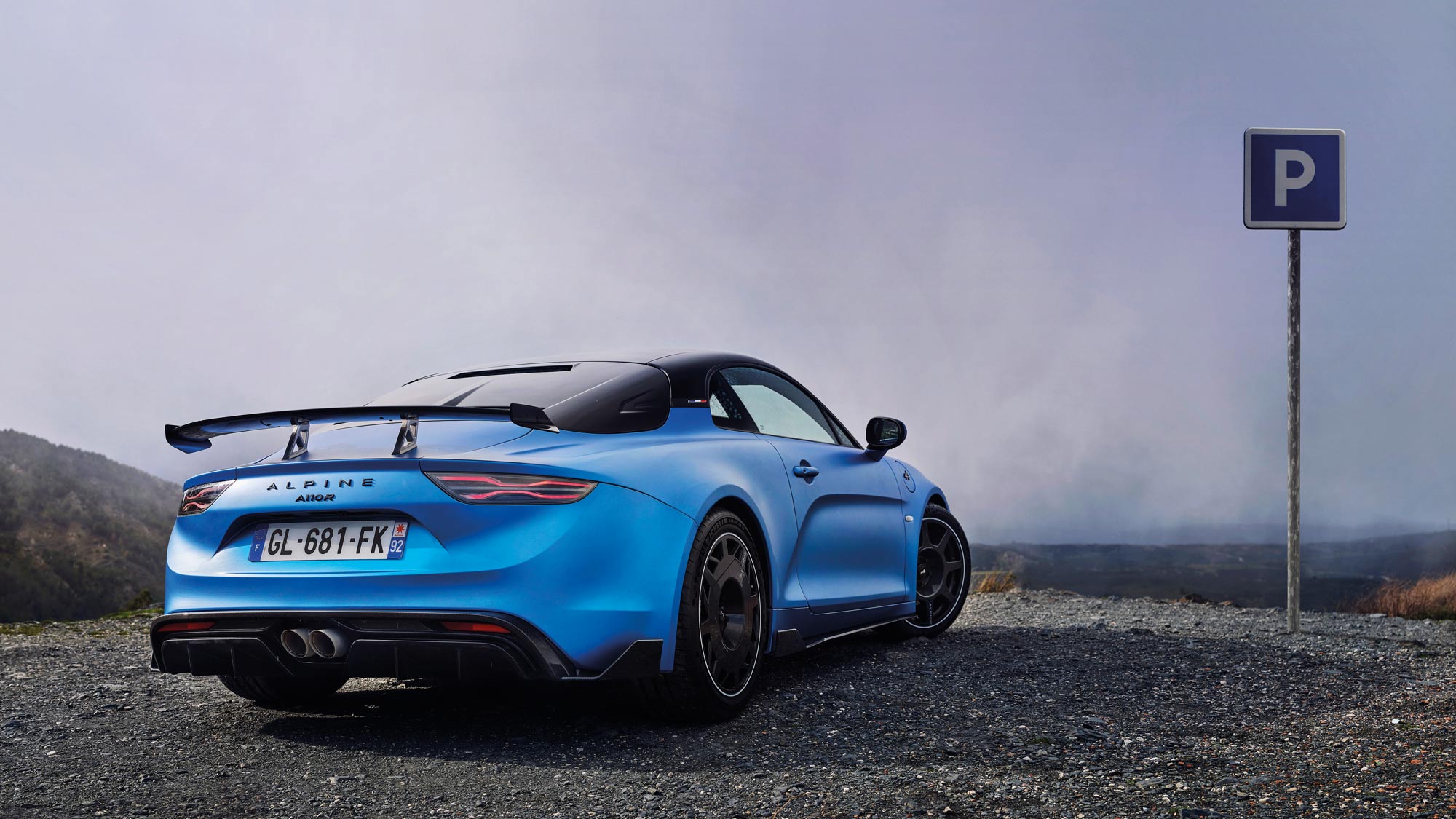
2025 Mercedes CLA review: the EV comes of age
It seems to me that the motor industry and its customers are somewhat out of step. It’s nobody’s fault and hard to see how it could be avoided, but just…

The new R version of the Alpine A110 is lighter than the base car thanks to the black elements – carbon fibre, including the bonnet
Renault
In 2017 Alpine launched a new small sports car and it changed the world. Or at least it should have done. For those few lucky hacks who drove it at the time, we thought we were witnessing a new dawn for such cars: gone would be the days of outsize, overweight, profligate sports cars, replaced by a new generation of small, lightweight and efficient machines that, as a result, were simply brilliant both to own and live with. It seemed so right, so obvious that the Alpine A110 would be a complete game-changer and reverse a direction of travel after far too long, it is possible we might have overlooked a thing or two. Like hardly anyone knew what an Alpine was, and even fewer cared. Fewer still were stoked by the idea of a 1.8-litre, four-cylinder powertrain out of a Renault Megane; and pretty though it was, it was just too petite to make a proper ‘get out of my way’ statement. Ever since and despite it being far and away the best usable sports car that kind of money can buy, sales have been slow.
And it’s hard to see this one making much difference to that, though at least the profit margin on each should be considerably more healthy for reasons we’ll be getting to in a minute.
This is the A110 R, the hardcore A110. If it were a Porsche it would be a GT or maybe even an RS model. The 296bhp engine from the A110 S comes over unchanged because to add a bigger, more powerful engine would hike the price northward in the home market thanks to the dreaded ‘malus’ car tax over there. So they decided just to make it better instead: carbon fibre is now used not only for bodily addenda like the front splitter, side skirts and rear wing, but integral components like the bonnet and wheels. New coilover struts provide multi-way adjustment while thicker springs and rollbars stiffen the suspension and drop the ride height. And just to make sure no one mistakes its intentions with this car, hardcore track day Michelin Cup 2 tyres are fitted. And at 1082kg, the A110 R weighs over 300kg less than a Porsche Cayman GTS. Which is a pretty stunning statistic when you think about it.
It’s not hard to feel the changes either. In a straight line there’s very little to tell between it and an A110 S because the power is the same and it’s only 34kg lighter, but in corners and, indeed, during every day living, you’re never likely to forget which model you’re in.
For a start, so long as the road is dry and the ambient temperature high enough to get the Michelins into their working window, grip levels are phenomenal. Circumnavigate a roundabout at ever increasing speed and there’s a decent chance you’ll give up before the Michelins. It corners flat, fast and changes direction like a gnat dodging a swat. You can feel its lightness everywhere and if you get straight back into a typical tonne-and-a-half sports car immediately thereafter, you’ll feel the additional inertia immediately too.
“It tends to oversteer on entry and understeer towards the exit”
But here’s the thing. A standard A110 is not exactly slow around the bends and feels just as light on its feet. Moreover while a stock A110 or even A110 S feels like the power of the engine is nicely matched to the ability of the chassis, in the R it simply does not. To make the most of that level of grip, you’d want another 100hp to cannon you out of the corners – and probably a race track as well.
Moreover, those stiff springs and no-nonsense tyres create two other issues, neither inherently desirable. First, one of the absolute delights of the standard A110 is that it sits on quite hard rubber – a Michelin Pilot Sport 4, not even the 4S that sits between it and a Cup 2. It means you can easily and safely discover just how well this car handles on the limit in a number of different scenarios. The moment you stiffen the springs and bolt on the semi-slick Cup 2s, that limit is projected into the next postcode where it’s far harder to find and therefore far less frequently enjoyed.

Inside, Alpine has gone to some lengths to make your surroundings appear ‘made for the track’
Renault
Unless, of course, it’s raining. A stock A110 in the wet is one of the most joyous things I’ve driven but the A110 R? You have to drive it with a care and precision you’ve not needed to think about until now. Even then it tends to oversteer on entry and understeer towards the exit, which is pretty much the reverse of what you want, and what the base car provides.
But what kills this car, at least for me, is the ridiculous £96,990 price tag that comes with it, when the base car is £44,500 cheaper. If the result was better in every way that mattered, you might think it a premium worth paying. But it’s not; indeed if you look at the reason we so adored the A110 when it came out – the value, the accessibility of driving experience and the daily driver comfort it provided – I’d argue the car has got worse. And for what? A fraction more performance and a vast amount of dry road grip that just makes it more difficult to enjoy what the car has always done best.
Don’t misunderstand me, if the A110 had never been built, I’d still be wowed by this car’s lightness, its compact dimensions and the way it gets down the road. But we can’t unwrite history and the truth so far as I can see it is that, compared to the original and, indeed all other modern A110s, the A110 R is a lot less fun for a lot more money.
Alpine A110 R:


It seems to me that the motor industry and its customers are somewhat out of step. It’s nobody’s fault and hard to see how it could be avoided, but just…

I grew up on Jersey and recently returned to catch up with some friends and family, one of whom, fine fellow that he is, said he’d be happy to lend…

As I write this, Jaguar Land Rover is at last starting to gear up again after its UK factories were brought to a shuddering halt at the end of August.…

I have a friend called Richard Bremner. You may know the name because he was a long-time staffer and former editor of Car magazine and is a current contributor to…

From 1911 to 1994, the Indianapolis Motor Speedway was pretty much a one-trick pony. The gates opened on May 1, the Indianapolis 500 was contested a few weeks later, and…

You’ll not have failed to notice that electric vehicles are now being thrown at us thick and fast, and I’m afraid to report that most I drive are still heavy,…

I have always considered what I do to be a young man’s game, inconvenient for me insofar as by the time you chance upon this column, you’ll be reading the…

The late monarch’s Range Rover went for 10 times the typical price of a similar non-Royal model

Late backer of the McLaren F1 team Mansour Ojjeh’s entire 20-car McLaren collection has been snapped up by one undisclosed buyer

This is such a superficially clever car. It’s a quite spacious five door family machine that, like so many other electric vehicles, also goes like hell when you so command.…

If you’ve watched the Netflix series Yellowstone you will want to go to Montana. If you haven’t it comes highly recommended by me and everyone else I know who’s seen…

Is Lotus really going to shut its Hethel factory? Personally, and despite the company saying it has “no plans” to do so, I would not bet against it. We had…